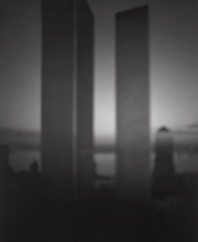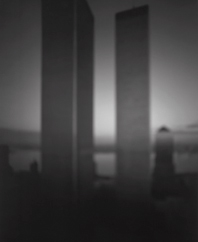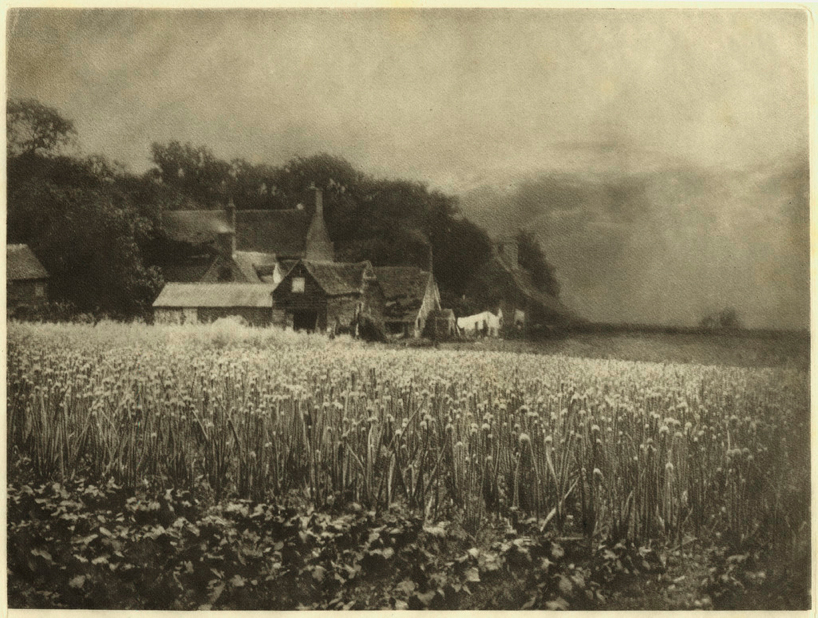
by admin
The use of movement and slow shutter speeds for concept-based intents and visual experiential outcomes.
 Photo Credit: Edgerton Harold
Photo Credit: Edgerton Harold
The uniqueness of the medium of photography resides in its ability to capture the passage of time, either with a long exposure or just freezing a moment in time. High-speed photography allows us to observe the fast actions of the world, the hidden spatial movements of humans, animals, as well as the physical properties of actions and laws of physics.
 Photo Credit: Richard Copeland Miller
Photo Credit: Richard Copeland Miller
The reverse of high -speed photography, the capture of movement has also immense potentials for expressive outcomes, the study of the passage of time as a unique characteristic of the medium. Extrusive time, an academic term, refers to slow shutter speeds, long exposures and movements within the subject or scene, as well as with the camera as we will explore shortly. Although many artists have explored extrusive time, either due to the limitations of their historical process, one with low sensitivity such as the Daguerreotype or wet collodion, or even slow optics, others have used these inherent limitations to record the passage of time for an emotional and ephemeral outcome. One of my greatest influences resides with Richard Copeland Miller who photographed the country of Romania in his book entitled “Passage Europe” in a most somber and immensely emotional manner, using both extrusive time and camera shake to imbue the viewer with an extraordinary sense of sadness and nostalgia for a country left behind in the 20th Century. Sadly, he passed away at an early age, yet his work resonates the deepest within my soul.
 Photo Credit: Richard Copeland Miller
Photo Credit: Richard Copeland Miller  “Ephemeral” by Cathy Dutertre
“Ephemeral” by Cathy Dutertre
Cathy Dutertre has made extensive use of extrusive time with several of her current projects, “Behind the Veil” and “Behind the Mask”. Using a tethered stationary camera, she will produce a performance (another academic term that designates a sub-genre of self-portraiture) together with various props in order to arrive at highly expressive images. The exposures are often in the 30 second to several minutes’ ranges, the tethering allows her to adjust her movements in order to arrive at a precise artistic outcome.
 Photo by Cathy Dutertre, 2014
Photo by Cathy Dutertre, 2014  Photo by Cathy Dutertre, 2014
Photo by Cathy Dutertre, 2014
Another aspect of illustrating movement resides in the camera’s movement during capture, the act of altering and deconstructing the scene using a variety of techniques including ND filters, variable movements of the camera and rear sync flash.
 Photo by Cathy Dutertre, 2014
Photo by Cathy Dutertre, 2014  “Chinoiserie” by Cathy Dutertre
“Chinoiserie” by Cathy Dutertre
Using movement, either from the subject or the recording device can be extremely emotional as the viewer re-interprets the image from a mental and emotional rather than physical points of view, whereas the use of extrusive time allows the artist to remodel the world at large, exposing the viewers to the astounding ability of the medium to record the passage of time.

by admin
The Technique of Variable Planes of Focus for Reflective Artistic Outcomes
 Photo by Pierre Dutertre
Photo by Pierre Dutertre
View cameras, with their ability to independently move the front and back standards to generate sharp images within complex environments where the detail of a product or structure has to be fully rendered, have been around for well over a century. Architectural photographers have used the swings, tilts and shift functions of their view cameras to generate accurate, fully focused and standard renditions of interiors and exteriors, ensuring perfect vertical lines and recording the fine details of a particular space or building. Commercial artists have indeed been fortunate to control precise planes of focus to accurately represent products without distortion and with immense or a very shallow depth of field. This was predominant in food photography, where only a small portion of the image would be in focus, thereby creating a visceral and imaginative reaction with the viewer.
However, this ability to precisely control 3-dimensional planes of focus (also known perhaps incorrectly as selective focus) can also be utilized by the creative artist who desires to highlight a particular point of interest in a scene, directing the viewer to an area of interest as intended for a concept-based reflective intent. This technique relies on the ability to move the lens 3-dimensionnally, with the equivalent of the swings and tilts available in a view camera format. There are several alternatives that replicate the front movements of a view camera, from the easily attainable to the exotic. The beginning point resides in a lens baby set-up available for 35mm DSLR cameras.
 Lensbaby, Tilted
Lensbaby, Tilted
The operator can simply twist the lens in multiple directions to generate a fairly precise 3-diemnsional plane of focus.
The results can be very creative in isolating certain parts of the scene in order to create a mood or an ephemeral and mysterious image that denies a full view to the viewer, allowing for directed and controlled points of interest and therefore an artistic communication, resulting in a reinterpretation of the scene by the viewer.
 Photo by Cathy Dutertre, 2012
Photo by Cathy Dutertre, 2012  Mounted Canon PC Type Lens, Tilted
Mounted Canon PC Type Lens, Tilted
Perspective correction (PC) or tilt-shift lenses for 35mm and medium format cameras have been primarily used by architectural photographers in order to control perspectives and distortion, but these exotic prime lenses can also be used to imbue a distinctive style and content to an image.
The Canon TS-E 24mm f/3.5L II allows for shifts and tilts, but can also be rotated to create a similar result of the lens baby, yet preserving a superior optical rendition.
 “White Knight” by Cathy Dutertre
“White Knight” by Cathy Dutertre
At the high end of the spectrum, one can use the X2 PRO system created for medium format and 35mm digital cameras, replicating the precise movements found in a view camera that otherwise may not be the best suited tool.
 X2Pro, Fully Extended
X2Pro, Fully Extended
Although created for studio use the X2 PRO is still manageable on location as in my personal use, despite the bulk and weight of the complete assembly. Mounted with a refurbished Mamiya body, a flawed Phase One P25 digital array, an ancient Mamiya RZ lens and a monopod, this rig has been a mainstay of many of my personal projects, allowing me to precisely control the 3-dimensional planes of selective focus to convey a mood and expressive / reflective artistic outcome. From a banal scene, I am able to extract the essence of a particular subject in order to imbue the image with a communicative message, the real subject matter that transcends the recording abilities of the medium.
 “Dawn” by Pierre Dutertre
“Dawn” by Pierre Dutertre  “Weeping” by Pierre Dutertre
“Weeping” by Pierre Dutertre
In effect, the technique of variable planes of focus imitates to some extent our human vision, monocular eyes that have a central point of sharpness, blurred peripheries and adjustable parallel focusing. The ability to push beyond these organic parameters with 3-dimensional planes of focus allows for a creative outcome, making images that are precisely controlled to add a quasi surrealist feel and mood, deconstructing unnecessary elements that do not support the concept, and creating engagement with the viewer as they examine a reconstructed reality as a personal communicative effort on the part of the artist.

by admin
Optical Blur for Expressive and Creative Outcomes
 World Trade Center, 1997 by Hiroshi Sugimoto
World Trade Center, 1997 by Hiroshi Sugimoto
Optical blur, or in other words the lack of sharpness and detail in a photograph, is an integral part of the limitations of the medium that can be used to effectively change the scene captured and reconstruct, reinterpret, the world around us in a communicative output. As Hiroshi Sugimoto, a contemporary photographer who has successfully used optical blur via defocusing a view camera to illustrate a massive project and book on architectural icons worldwide, declares: “It is about seeing the thing itself rather than the thing”. http://www.sugimotohiroshi.com/architecture.html.
As our eyes are assaulted by a flurry of confusing details within any scene or environment, the deliberate act of removing such details precisely and controllably with the technique of blur allows the artist to communicate his or her personal communicative view of the essence of the world to the viewers, in an expressive and experiential reinterpretation of the mundane or iconic.
 Early Figure of Camera Obscura
Early Figure of Camera Obscura
Optical blur can be achieved with a variety of methods, from pinhole applications to flawed optics and manually defocusing lenses, but originally started with the camera obscura, a pinhole system that is at the core of photography and originally used in the Baroque period by many Lowlands painters to accurately draw complex and sometimes contained perspectives, such as the interiors of Johannes Vermeer. From the inception of the Daguerreotype onwards, great advancements in the resolution and quality of optics resulted is sharp images with immense depth of field, the desired result with photographs up to our present time when digital camera manufacturers tout the ubiquitous amount of clarity and detail regarded by the public as quintessential to a “good” image. The Pictorialist movement of the late 19th and early 20th centuries sought to reverse that trend in order to place photography as its own art form, closely following the established medium of painting as its stylistic and subject matter influences. In that desire, one doomed to last only a few decades before modernism dismissed the failed aspirations of the pictorialists, flawed optics and pinholes were commonly used together with the gum bichromate and platinum processes to render ephemeral images lacking detail and with limited or non existent sharpness. Such an example can be seen in the iconic image by George Davison, “The Onion Field”, 1889, one created with a pinhole camera.
 “The Onion Field” 1889, by George Davison
“The Onion Field” 1889, by George Davison
Pinhole photography has seen a marked resurgence in contemporary concept-based fine art photography, with a passionate following, yet one often devoid of a sound conceptual approach. Several websites deal with the subject and application of the pinhole methodology: http://www.pinholeresource.com/, http://chriskeeney.com/ck-pinhole-photography-resources, http://photo.net/learn/pinhole/pinhole.
Pinhole photography can be very affordable, with laser drilled brass pinholes of varying diameters available for 35mm DSLR’s and medium format digital cameras, yet these lack the hand of the artist insofar as creating your own pinholes can be far more unpredictable and therefore more appropriate for the “chance” element of the medium in terms of the methodology used to support a sound stylistic conceptual application. An example of this personal application can be seen in a collaborative project with Cathy Dutertre in her ongoing search for spiritual and scientific questionings, “Quest”, created with a pinhole mounted directly on a medium format digital array. http://www.pierredutertre.com/2013-collaborative-project/, http://cathylyn.com/new-work/.
 “Flight”, by Cathy Dutertre
“Flight”, by Cathy Dutertre  Ground #42, 1997 by Uta Barth
Ground #42, 1997 by Uta Barth
The method of defocusing a good optic for a conceptual approach resulting in experiential imagery can at first glance appear easy and gimmicky, yet I must simply say that it is a most difficult technique that requires a precise intent rather than the search for singular “cool” images. Hiroshi Sugimoto, as discussed earlier, has applied this methodology in a consistent manner to illustrate his personal approach to illustrating architectural icons in a minimalist style and intent. Uta Barth, a contemporary post-modernist conceptual artist has applied a different technique by focusing her camera on an object close to her camera and effectively defocusing a banal scene further away, often within the confines of her immediate spatial presence, thereby offering a reconstruction of mundane environments for experiential outcomes. I have applied similar conceptual principles within my ongoing “Seascapes” series, one firmly inspired by pictorialist principles as well as post-modernist approaches of deconstructing the inane representative qualities of the medium, using a flawed 40mm Hasselblad lens on a mechanical body mounted with a medium format digital array that is taped on the body with duct tape due to incompatibility. http://www.pierredutertre.com/sea-scapes/
 “Seascape Study #7”, by Pierre Dutertre
“Seascape Study #7”, by Pierre Dutertre
This leads me to consider the radical approach of using flawed optics, or vintage optics from collectible cameras, mounted on modern digital platforms with a variety of MacGyver methods, such as glue or duct tape. David Arnold, a fully engaged artist, educator and mentor first introduced me to the possibilities of using flawed optics for expressive purposes, often cannibalizing vintage camera lenses and mounting these on a variety of digital cameras with tape in order to introduce a “chance” element to the resulting imagery. This approach clearly follows the great philosopher Vilem Flusser http://monoskop.org/images/c/c4/Flusser_Vilem_Towards_a_Philosophy_of_Photography.pdf who wrote that the photographer must be in full control of his “apparatus”, the camera, in order to rewrite the parameters of the mechanical aspects of the technology in order to uplift its limitations that are created by the manufacturer and society as a whole, to reinterpret the artist’s viewpoint as a communicative outcome for the viewers who will then reconstruct their own interpretation according to their personal cultural background. http://davidarnoldphotography.com/
In conclusion, I must point out that the technique of blur cannot simply be the result of accidental experiments, nor can it be the ubiquitous search for “cool” images, but rather the intellectually and stylistically driven approach to creative expressionism, the mandated outcome of any artist who seeks to communicate a personal view of their personal interpretation of the world at large to their viewers.
If you are interested in knowing more about the complex technique of optical or lens-less blur, I will be conducting exclusive and practical workshops later this year under the guise of the UPA Gallery.

 Photo Credit: Edgerton Harold
Photo Credit: Edgerton Harold Photo Credit: Richard Copeland Miller
Photo Credit: Richard Copeland Miller Photo Credit: Richard Copeland Miller
Photo Credit: Richard Copeland Miller  “Ephemeral” by Cathy Dutertre
“Ephemeral” by Cathy Dutertre Photo by Cathy Dutertre, 2014
Photo by Cathy Dutertre, 2014  Photo by Cathy Dutertre, 2014
Photo by Cathy Dutertre, 2014 Photo by Cathy Dutertre, 2014
Photo by Cathy Dutertre, 2014  “Chinoiserie” by Cathy Dutertre
“Chinoiserie” by Cathy Dutertre

 Photo by Pierre Dutertre
Photo by Pierre Dutertre
 Photo by Cathy Dutertre, 2012
Photo by Cathy Dutertre, 2012 





 World Trade Center, 1997 by Hiroshi Sugimoto
World Trade Center, 1997 by Hiroshi Sugimoto Early Figure of Camera Obscura
Early Figure of Camera Obscura “The Onion Field” 1889, by George Davison
“The Onion Field” 1889, by George Davison
 Ground #42, 1997 by Uta Barth
Ground #42, 1997 by Uta Barth
Recent Comments